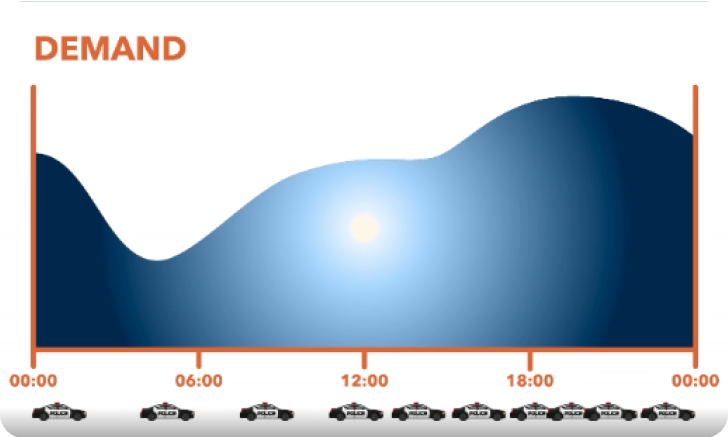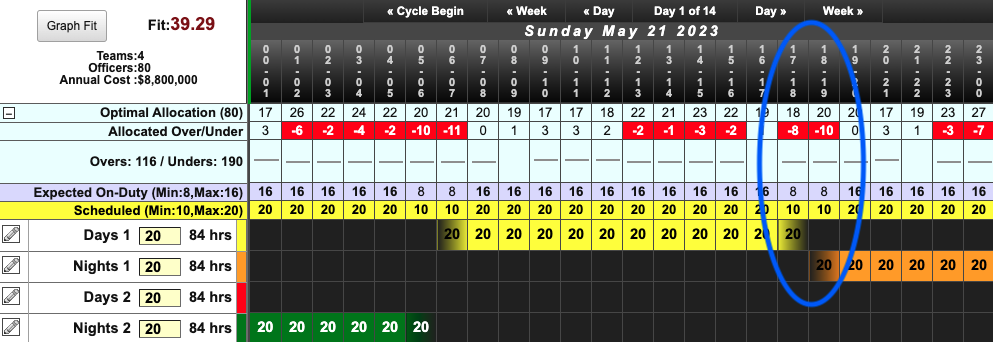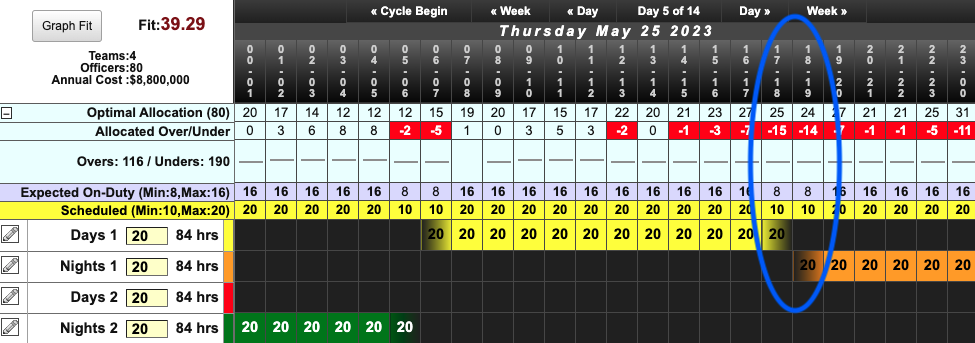Police Staffing, Scheduling and Deployment Services (720) 685-9550
Police Staffing, Scheduling and Deployment Services (720) 685-9550

In the face of high attrition and low recruitment plaguing the law enforcement sector, the conversation frequently revolves around increasing hiring bonuses and bettering pay rates to attract and retain staff. But perhaps, there’s a pivotal solution that we’re missing – could an improved scheduling process better allocate existing resources, easing the workload for officers? In this blog post, we dive into the possibility of refining the current schedule as a tool to mitigate staffing challenges. We’ll consider how efficient resource use can become a game-changer in times of dwindling numbers and growing demands, and why we need to prioritize this often overlooked aspect of law enforcement administration.
Even if agencies could hire a plethora of cops today, those officers won’t be ready to work for many months to come. The training process is lengthy and, by the time those officers are ready, several more will have left the organization. Getting ahead of that cycle is next to impossible. In the meantime, the calls keep coming, and the demand is still heavy. No one wants overworked and burned-out officers responding to critical situations and, the more they burn out, the greater the chance they’ll quit. Longer hours and more overtime are dangerous and most certainly not sustainable. Efficient use of resources is more important now than ever.
There is efficiency hiding inside patrol schedules that few agencies are tapping into. To better understand this, let’s look through a lens we can all relate to.
There is a finite number of officers to deploy within an agency just as there is a finite amount of money we have within our budget. Each month we allocate proportional amounts of money to maintain a balanced life. We pay a mortgage or rent so that we have a place to live. We pay utilities so that we have electricity and heat. We allocate our available funds responsibly and efficiently.

If we didn’t allocate those funds responsibly, efficiently and proportionally, there would be consequences. If we paid the same amount of money to the mortgage company as we do to utilities, then we would lose our housing due to underpayment. Conversely, it would be wasteful to pay the utility company the same as we pay our mortgage company. The same applies to not allocating our patrol resources responsibly, efficiently and proportionally.
We are seeing those consequences play out with overworked and burned-out cops. If some officers are running from call to call while others are not feeling that pinch, then there’s inefficiency hiding in the schedule. The most efficient schedule allocates the number of officers proportional to the demand. Just like you allocate the appropriate amount of money proportional to the amount of the debt or bill, the same applies to patrol scheduling.
A patrol schedule that does not consider the demand for service when allocating officers will leak efficiency. This leakage can occur by the hour of the day or by the day of the week. For example, if you had 80 officers and 4 teams and wanted to equalize the span of control across all the teams, you could put 20 officers on each team. This seems fair and balanced. In addition, this schedule could rotate so that officers only worked every other weekend. The example below, which is very similar to a schedule configuration recently recommended in a staffing study for a large metropolitan agency by a different consulting company, assumes two 12-hour shifts per day, so there is no overlap between day shift and night shift.
This allocation treats every day the same and every hour the same. It assumes that the demand for service is the same every day and every hour. There is the same number of officers working Sunday evening between 17:00 – 19:00 as there are working Thursday evening between 17:00 – 19:00. While both periods are understaffed, according to the demand during those hours on those days, Thursday is severely understaffed.
Using a tool like Deploy, we can analyze exactly how suitable this schedule is given the demand recorded in the CAD system.


Officers working Sunday evening at 17:00 may feel a little busy, but the officers working Thursday at 17:00 will feel crushed by the demand. The short staffing is almost double Thursday than it is on Sunday.
But what if you could make the workload easier for all of the officers, no matter what day or hour they’re working? Let’s take the same number of officers, 80, and create a schedule that allocates the officers proportionately to the workload. We added some teams and adjusted the days they work and the hours they work. Not only did we alleviate the crushing understaffing hours, but we also incorporated training into the schedule, and each officer actually works fewer hours on the street than the previous schedule.


In conclusion, the significance of an efficient patrol schedule in dealing with staffing issues cannot be overstated. Demand-driven deployment paves the way for balanced workloads, even in scenarios of high attrition and short-staffing. By harnessing the power of smart scheduling, we can alleviate the pressures on our law enforcement officers, making their jobs manageable and reducing the burnout rate. This strategy goes beyond merely filling vacancies; it’s about making the most of the resources at hand to ensure the safety and well-being of our officers and the communities they serve.
For more insights into our innovative solutions addressing staffing concerns, follow this link. Let’s rethink scheduling as we know it and embrace a future of more efficient law enforcement operations.
Gain new insights to drive efficiency, effectiveness, and community trust. Download a FREE sample report, and take the first step toward a demand-driven policing strategy.